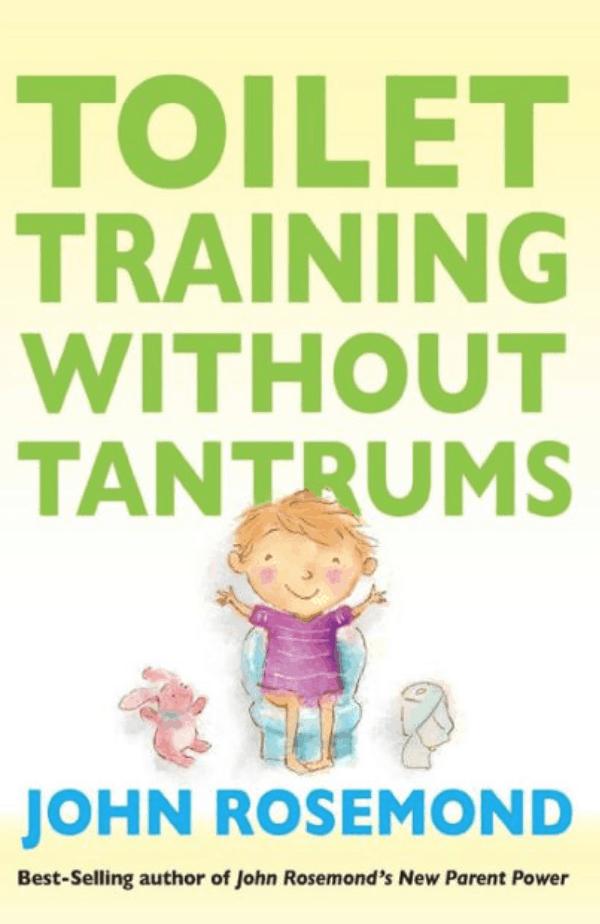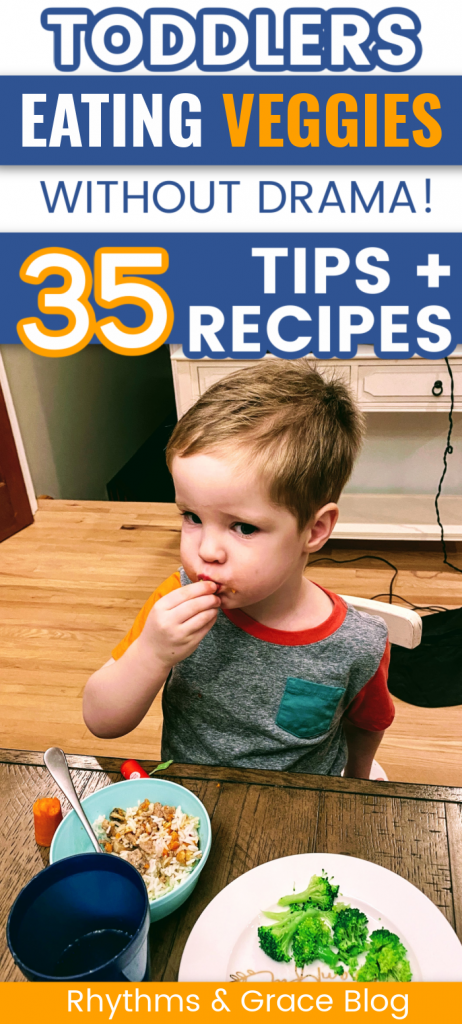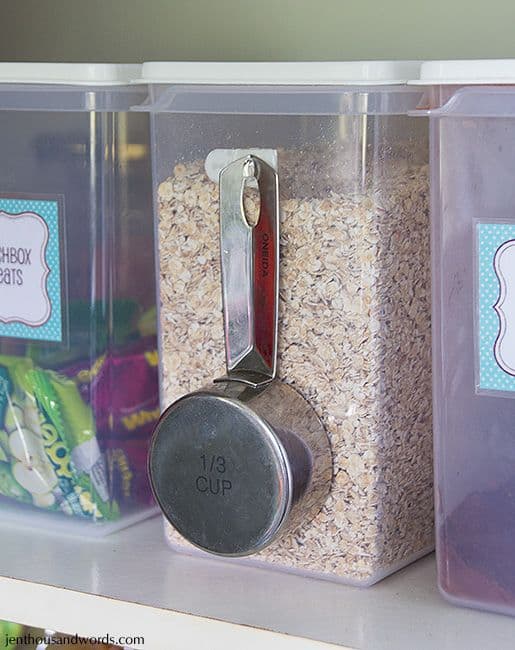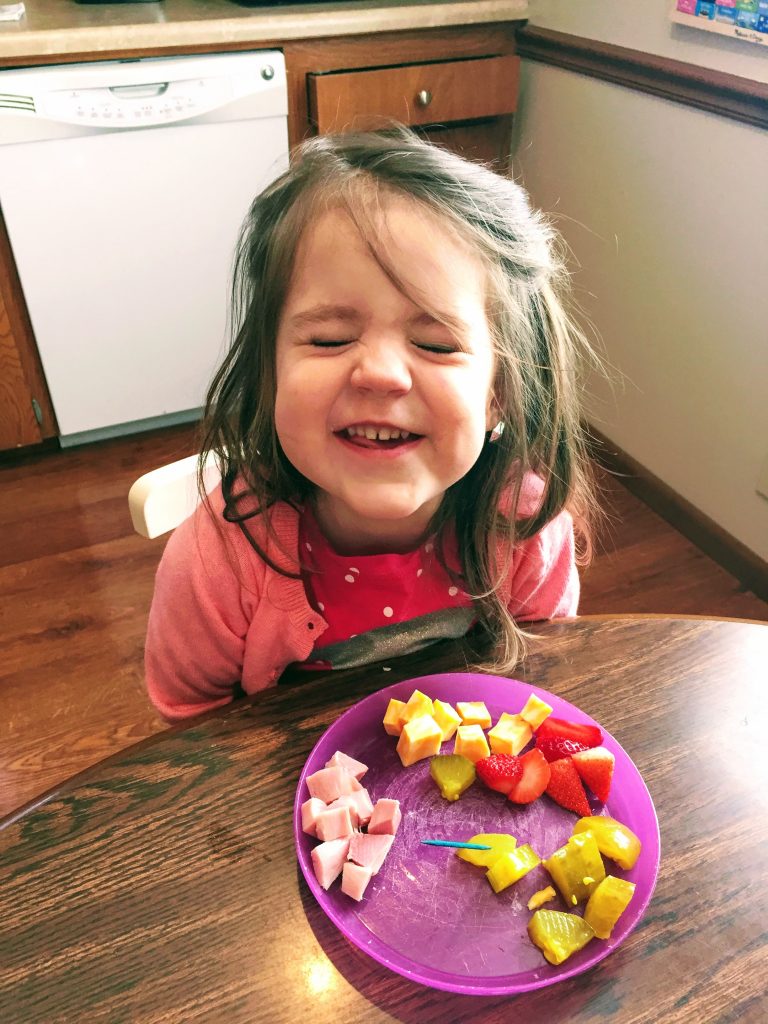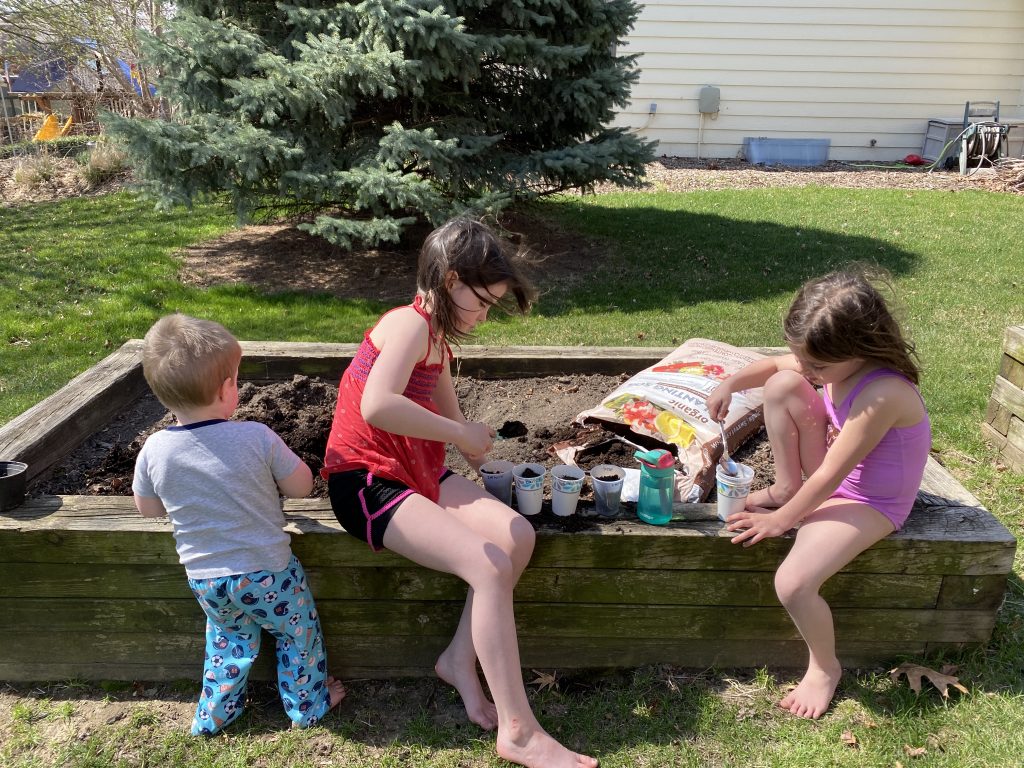Some of the links on this page are affiliate links. When you make a purchase through an affiliate link, I earn a commission at no cost to you. See my entire disclosure policy for all the boring details.
In this article I am going to give you more 35 tips and recipes that will help your toddler learn to eat & like vegetables!
It’s a tale as old as time… or at least as old as modern parenting & processed food. Your toddler, sitting at the dinner table with arms crossed and a sour look on their face, staring at the broccoli on their plate. How do you get your toddler to eat vegetables?
We’ve had 4 such toddlers in the last 6 years… One child only wanted to eat pasta and chicken nuggets. Another loved fruit, but green vegetables were worthy of a meltdown. Over the years, I’ve tried many of the tips and recipes below with each of our 4 kiddos. And now at ages 3, 4, 6, and 7, they’re mostly willing to try new things and eat fruits & veggies as part of snacks & meals.
This article has:
- Simple tips & tricks for increasing your child’s vegetable intake.
- Ideas for how to talk about food… yes, this matters.
- Tons of kid-approved recipes tested on my own 4
guinea pigschildren.
Let’s get cooking!
Simple Tips & Tricks
1. Limit snacking.
This is a tough one, because snacks are yummy, and they keep your toddler occupied for a few minutes. But by limiting snacks, your child will likely be hungrier at mealtimes.
Of course, if your child is legitimately hungry during the day, don’t deny them food, but try offering veggies as a snack.
The not-so-surprising trick to limiting snacks is to buy fewer snack options. I try to keep one or two available at a time and emphasize to my kids that we do one bowl. I have little kid bowls that I dish the snack into.
BONUS TIP – If you want the snack to be self-serving, dump the bag into an airtight container & put a 1/3 cup scoop on the side like pictured below.
Talk about portions and healthy choices and how they may serve themselves one scoop. If they’re still hungry after it’s gone, they can choose nuts, fruits, or veggies.
If they tantrum when you say “no more,” move the snack container out of sight & out of reach, and walk away calmly. Or put them in time out, or however you want to deal with that.
2. Veggies first at mealtimes.
Before putting the dinner food they love on a plate, serve a vegetable course. I often make a small plate of raw veggies as an appetizer for the kids to eat while they were waiting at the table for dinner. This way, they’re not filling up on all the other options before they get the veggies in.
Sometimes, the kids watch a show while I’m making dinner. I cut up raw veggies and put them in little kid bowls for them to munch on while they watch the show.
They’re in zombie-tv watching mode, so they just mindlessly eat what’s in the bowl. Mwahaha!
Protein at breakfast. I’ve found that serving protein at breakfast makes a huge difference in how hungry they are all morning! If my kids eat a bowl of cereal for breakfast at 7:15, they’re hungry by 9:00 am. If I add protein, we can often go until 11:00 or so, and then I just put out a snack-plate of veggies while I make lunch.
Some of our favorite options for protein at breakfast are:
- Frozen sausage links
- Egg casserole (these are our family’s top 3 favorites – Amish Breakfast Casserole with Hashbrowns, Overnight Wine & Cheese & Salami Casserole, Keto Breakfast Casserole)
- Bacon
- Scrambled eggs
- Egg sandwiches with scrambled eggs and bacon or sausage patties
- Hard boiled eggs – If you make them in an instant pot, they’ll be so easy to peel, your 3 year old could do it by himself!
- Kodiak brand waffles / pancakes – I use the milk & eggs version on the back of the box to add even more protein. We typically also use sugar free syrup so that we can have these as many times a week that we want without going overboard on sugar!
3. Think about what else is on the plate.
Try to minimize the starchy sides that they devour (and that fill them up quickly). Or, maybe choose other options that aren’t as appealing. For example, if your child is not a big fan of salmon, serving the fish alongside some broccoli may make the broccoli the tastier option.
4. Leave bite-sized veggies out for the afternoon.
Make a plate of some raw veggies cut into bite-sized pieces and leave it out as you and your toddler go about your afternoon. They are so easy to “grab-and-go.”
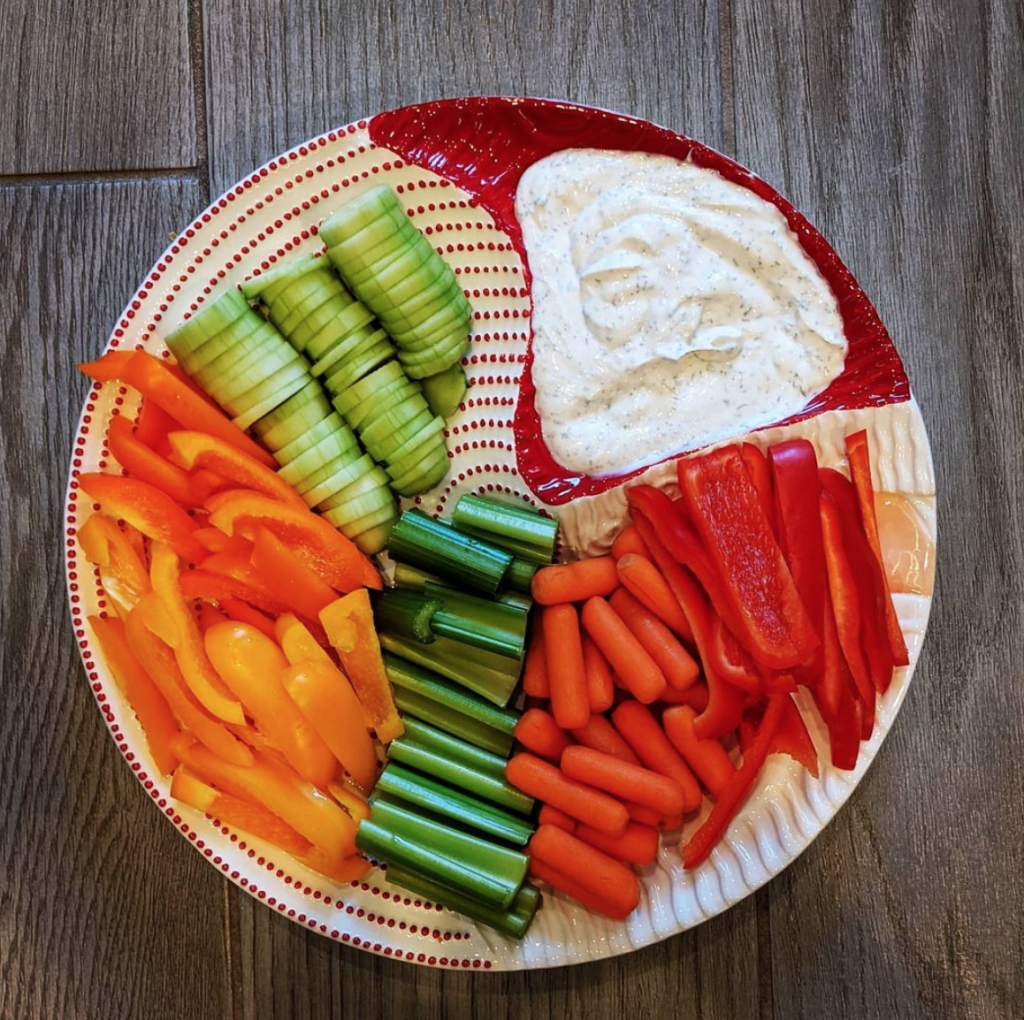
5. If you don’t finish dinner, don’t eat dessert.
While we don’t force our kids to eat their dinners, if they don’t eat what’s served on their plate (which is a reasonable portion size for their age), then they don’t have dessert.
We’ve found it’s best not to make a big deal out of it, or make it emotional, or even try to coerce them into eating. Keep it matter of fact – we eat dessert after our dinner is eaten. If your child decides to opt-out of dinner and skips dessert, acknowledge that it’s their choice and go about your business. (They won’t starve themselves, I promise!)
6. Keep offering variety.
Everyone gets bored of the same food all the time, so keep the selection of vegetables interesting. Rotate through all different choices. You might be surprised at ones you think your toddler wouldn’t like, and the variety will keep them curious.
7. Serve something they like along with the new veggie.
Having a favorite along with the new food may make them more agreeable to eating both. This is especially true if you can mix them together (like peas and carrots).
8. Give them a choice.
Rather than just serving one vegetable, give your toddler a choice between two. I like to cook both, serve them in big dishes on the table, and then tell the kids they get to serve themselves their own veggies & that they can choose one or both.
This tip always worked great with my kids, not only for veggies but also for videos to watch, clothes to wear, etc.
Toddlers love when they think they’re “in charge”, and giving them a choice lets them be in charge within a limited boundary.
How You Talk About Food
9. Healthy food is yummy too.
It’s so important for parents to talk about healthy foods in a positive way. If your toddler overhears you praising the deliciousness of brownies, but never hears you mention a delicious salad, they’ll think veggies-bad, sugar-good.
Complaining that you want a burger while you eat broccoli will show your toddler that vegetables are a form of punishment, not the food that their body wants and needs.
10. Food as fuel
We also talk about how food is fuel for our bodies, just like gas is fuel for the car. Healthy food gives us energy to go about our day, just like gas helps the car.
11. Healthy emotional connections to food.
Try not to call your toddler a “picky eater.” I’ve definitely talked about certain kids of ours as picky, so I’m not claiming perfection here.
But, we’ve noticed that labeling kids’ eating habits can produce feelings of “good” and “bad” food/ behavior around eating. The less emotional connection to food, the easier it will be for your children to learn to make healthy eating choices for the long haul.
Fill your home with fruits and vegetables and always have them on hand. Bring sweets and treats into the house on occasion, rather than having them also readily available. By having healthy foods always in the house versus only having sweets in the house sometimes, you can teach your toddler there are “everyday” foods and “sometimes” foods, which is a much healthier relationship.
12. Weight & how food affects your child’s body
Never discuss your toddler’s weight in relation to the food they’re eating. Frame your food discussions around health, not weight.
Likewise, food should be used very sparingly as a “reward” for behavior. We never use food for behavior related rewards. However, I definitely use little treats to make certain games more fun during homeschool lessons. 🙂
With my kids, we mostly try to talk about how a food will help them grow. For example, we eat protein to grow our muscles, and potatoes have carbs which gives us energy if we don’t overdo it. Or, veggies like broccoli give us vitamins and minerals so our brains grow.
By teaching your toddler how the foods they eat affect their bodies, they learn that food is fuel, and they are less likely to label foods or form emotional connections (which are habits that could cause eating disorders later on in life.)
As our kids have gotten a bit older & see my husband I exercise & eat healthier, they were interested in learning more about proteins, carbohydrates, and fats, and we would read about them together.
13. Talking about choices at the grocery store.
When you go to the store, let your toddler pick out some veggies to try. (I mostly do Walmart Pickup these days, but it might be worth a couple trips to the store with your toddlers just for produce!)
You can talk about the different vegetables they have at the store while shopping, and help them make a choice based on what you know they like. Then, find a way they can help you cook the veggies when you get home. If they have a hand in choosing and making the meal, they may be excited to actually eat it, too.
14. “It’s not my favorite.”
Teach your child to say “it’s not my favorite” as an alternative to “yuck!” As you know, our tastes change over time. They might not like spinach the first few times you serve it, but as they get older their taste may change.
When one of our toddlers hasn’t liked something, the conversation usually went something like this:
- Toddler: Yuck!
- Me: It’s not your favorite, huh? that’s okay. Say, it’s not my favorite.
- Toddler: “Snot my fave-whit.”
- Me: That’s okay. It was a good idea to try it. Your tastes might change.
Phrases like “it’s not my favorite” and “your tastes might change” plant the idea in their mind that their tastes will change over time. We’ve seen this pay off with our big kids!
To that end, remember to keep trying different options as a family. Since tastes do change, some vegetables that were not favorites before might be welcomed new options now. If you work together as a family to instill great habits and thoughts around vegetables and healthy foods, you can have a lot of fun together discovering new tastes!
Gardening
A fun activity to do with your toddler is to grow a vegetable garden together! Even if it’s just one plant in a pot, it can be exciting to nurture a plant and watch it grow vegetables.
15. Tomatoes
Garden fresh cherry tomatoes are so delicious and very easy to grow. They make a great first gardening project. All you need is a large pot, potting soil, a stake, and a tiny tomato plant. Give it a sunny spot and work with your toddler to water it daily. Throughout the summer it will grow and then you’ll get to enjoy the fruits of your labor!
16. Zucchini
Zucchini is also very easy to grow. The vegetables get pretty big so you’ll need to plant this one in the ground. Zucchini is a fun veggie to plant from seeds. Put one zucchini seed in a small cup with some soil in February or March. Find a window to put it in front of and water it every couple of days to keep the soil moist. Your toddler will love watching it sprout!
Once it becomes too big for the cup, transfer the plant to the ground and keep watering it daily. Zucchini is a bountiful plant, and you’ll soon have enough of the veggie to make all sorts of recipes. We love making zucchini fries, keto zucchini bread, and zucchini brownies!
Here are links to our favorite zucchini recipes:
17. Fresh Herbs
It’s fun to start some basil, parsley or cilantro from seed. You can do this in front of any sunny window or on your porch. As it yields an herb, as your child
TIP – cheap spray bottles are perfect for toddlers independently watering seeds/ herbs indoors without drowning the plant.
My kids were gifted a garden kit like this one Christmas, and we started the plants from seed indoors in February. It was so fun to watch them sprout, grow, and transfer them to the outside garden.
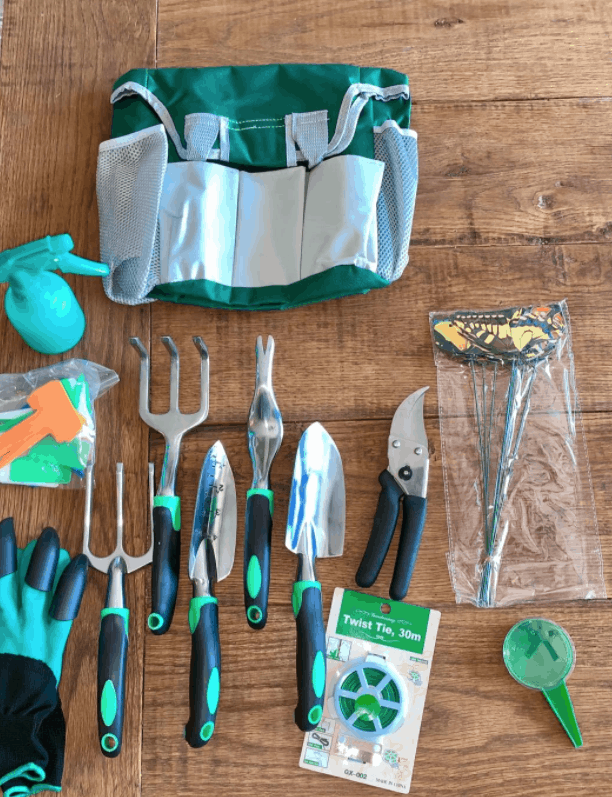
Dressing Veggies Up
Don’t feel shy about making vegetables tasty! There are so many ways to dress them up to get your toddler to eat them. Add butter and seasoned salt
18. Try various sauces and dips
19. Serve steamed veggies sprinkled with parmesan cheese
20. Mix them with other parts of the meal (like cut up meat or pasta)
21. Toss green beans with slivered almonds or toasted breadcrumbs
22. Make a cheese sauce for broccoli and cauliflower
23. Sprinkled toasted breadcrumbs and parmesan on top of zucchini
Hiding Vegetables in Toddler’s Food
I’m not a fan of always hiding vegetables, because I feel toddlers will grow to love many veggies in their true form eventually. However, in our home, food is not a power struggle. We serve what we serve, they can eat it or not. There’s always a heaping plate of veggies available if they don’t want what’s served. No fuss, no drama.
If you find your child is just not loving their veggies at the moment, hiding them in the food can make sure your toddler is getting the nutrients they need.
24. Smoothies / Juice
Smoothies are a great way to hide veggies such as spinach and beets. Spinach is barely noticeable in a smoothie when combined with sweet fruits such as berries. Beets go great with citrus fruits such as oranges, and they produce such a pretty color, your toddler will love it!
We were gifted a Vitamix for Christmas one year, and I love love love it!! I use it all the tiem a& highly recommedn it if you can afford the investment. If you’re on a tight budget or don’tw ant to spring for tone though, here are two other great options:
- 40 oz Hamilton Beach Blender – under $40 and over 8,000 5-star reviews
- 72 oz. Ninja Blender – approx. $100 and over 15,000 5-star reviews.
I haven’t started juicing yet, but I have a few friends who swear by it. One friend did tons of research and ended up with this juicer. She said it’s super easy to clean & it gets ALL the juice out of the veggies. Apparently, not all juicers do a good job. So make sure you get a good one! This one my friend recommended is typically under $100.
25. Healthy Muffins
Healthy muffins are another great way to get some extra veggie servings in. There are many recipes available on the Internet, but here are some of our favorites:
I love these silicone muffin cups for making the muffins look even more fun! Plus, you save on trash and you can wash them in the dishwasher.
26. “Faux”tatoes aka: Cauliflower Mash
Mash cooked cauliflower to mimic mashed potatoes. Add butter and a bit of milk to well cooked cauliflower, and the consistency will be very similar to mashed potatoes. Here’s the cauliflower mash recipe I use.
27. Finely Chopped or Puréed Veggies in Anything
Finely mince (or food-process) a mixture of vegetables such as carrots, peppers and spinach, and add the mixture to ground meat for hamburgers loaded with veggies. This is particularly good in turkey burgers as it also adds moisture to the meat as it cooks.
Butternut squash can be added to macaroni and cheese. Purée the squash and add it to the cheese sauce before mixing with the macaroni.
You can even sneak veggies into desserts! Try this avocado chocolate mousse.
Spinach has a way of sneaking into all sorts of foods without being noticed. Chop them in the food processor and you can add them to pretty much anything. When I make chicken soup for my kids, I cook some spinach in the broth and then use a handheld blender to blend the spinach into the liquid. Just don’t use too much or it turns a weird color.
More Recipes with Vegetables That Kids Love
Here are a few more of our family’s favorite recipes with veggies that I wanted to share.
28. Keto Chicken & Broccoli Alfredo
29. Meat Sauce with Hidden Veggies (serve with veggie-packed pasta for extra vegetables!)
30. One Pot Mac and Cheese with Hidden Vegetables
32. 4 Ingredient Carrot Crackers
34. Healthy Alfredo Sauce (with cauliflower)
35. Broccoli Cheese Mini Muffins
It’s Part of The Terrific Twos!
Between the tips and tricks I’ve given you and the recipes shared here, I think you’ll have a great chance of getting your toddler to eat vegetables easily and happily. Just remain calm, keep offering, limit junk-food snacking, and they’ll eventually like veggies.
The thing about toddlers is…
They are often exercising their innate desire to be in control & testing the limits of where the boundary lines are. Understanding what’s actually going on in a two year old’s brain is key to enjoying your toddler rather than letting them drive you crazy all the time!
After having 4 two year olds, I honestly love this age!! I wrote all about our approach to toddler discipline & parenting in this post over here. Much of it is based off my favorite book to give parents of toddlers: Making the “Terrible” Twos Terrific! by John Rosemond. I also love his potty training book.
If this is the season of life you’re in, I highly recommend both of these books:) Implementing his common-sense parenting tips will make your life so much easier & make both you and your toddler happier!
RELATED POSTS:
- The key trick to helping your toddler obey “No” that you’re probably not doing!
- 13 month old activities to play at home
